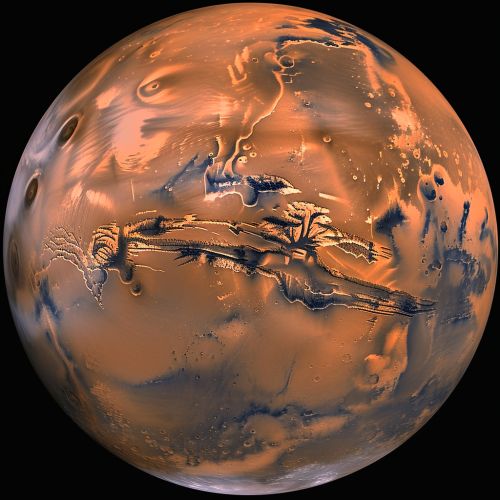Climate Change on Mars
Introduction
Climate change on Mars refers to changes in the climate of the Red Planet over the course of eons. Unlike Earth, which is protected by its magnetic field, Mars' surface receives a large amount of radiation. This radiation triggers a series of chemical reactions with the Martian soil, generating gases that heat the planet.

Understanding Martian Climate
The climate of Mars is primarily determined by the planet's axial tilt and eccentricity of its orbit. The axial tilt varies with a 124,000-year period and can range from zero, at which point the Sun will be overhead at the equator, to 60 degrees. The eccentricity varies on timescales of 96,000 and 413,000 years. These variations cause significant changes in the distribution of sunlight on the Martian surface, which in turn affects the climate.
Historical Climate Change
Evidence suggests that Mars once had a denser atmosphere, with weather patterns and an ocean of liquid water on its surface. This implies that the Martian climate has changed significantly over billions of years, transitioning from a relatively warm climate that could support liquid water to its current cold and dry state.
Mechanisms of Climate Change
There are several mechanisms that could have contributed to the climate change on Mars. These include:
Loss of Atmosphere
Over time, Mars has lost a significant portion of its atmosphere to space. This is primarily due to the planet's low gravity and lack of a magnetic field, which allow charged particles from the Sun to strip away the atmosphere.
Volcanic Activity
Volcanic activity can also influence the climate by releasing gases into the atmosphere. Mars has the largest volcano in the solar system, Olympus Mons, and evidence of ancient lava flows suggests that the planet was volcanically active in the past.
Impacts
Large asteroid impacts can have a significant effect on the Martian climate. The heat from an impact can vaporize a large amount of water and carbon dioxide, increasing the atmospheric pressure and potentially causing a temporary warming period.
Evidence of Climate Change
There is a wealth of evidence that the climate on Mars has changed over time. This includes:
Geological Evidence
There are numerous geological features on Mars that suggest the planet once had liquid water. These include dried-up river valleys, lakebeds, and the northern polar ice cap.
Atmospheric Evidence
The composition of the Martian atmosphere also provides clues about the planet's climate history. The current atmosphere is thin and mostly carbon dioxide, but there is evidence of past periods of increased methane, which could indicate periods of warmer climate.
Ice Caps
The polar ice caps on Mars are made of water and carbon dioxide, and their size and shape change with the Martian seasons. Studying these ice caps can provide information about the planet's climate history.
Future Climate Change
The future climate on Mars will be influenced by a variety of factors, including solar evolution, orbital parameters, and geological activity. However, the most significant factor is likely to be human activity, as plans for colonization continue to develop.
